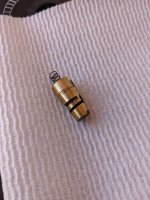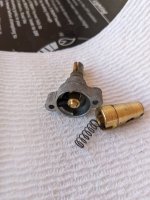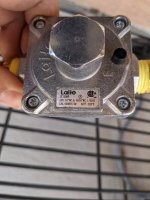Hi all, New to the forums!
I recently purchased a barely used Genesis Gold C (3290001) for $60, love it so far but I wanted to ask what is the best way to convert it from Propane to Natural Gas? I recently moved to a new house that already has a natural gas hookup and want to use it.
I was told by an employee at Ace hardware that all I would need is a conversion kit, he sold me one made by Blackstone: Conversion kit
I also purchased a NG regulator on Amazon.
However, after reading several posts on the internet; it seems that it is not always as simple as just swapping out orifices and gas hose on some of the Weber grills. Not to mention that the orifices in the kit may not be the exact size required as it was designed for a blackstone grill.
I want to keep the ability of reverting back to Propane; so I saved and labeled the original orifices for the main and side burners.
Will I have to purchase a new manifold? or can I get away with how I converted it with the kit. I remember reading that sometimes it depends on what style control valves were installed.
Thanks for your insight!
I recently purchased a barely used Genesis Gold C (3290001) for $60, love it so far but I wanted to ask what is the best way to convert it from Propane to Natural Gas? I recently moved to a new house that already has a natural gas hookup and want to use it.
I was told by an employee at Ace hardware that all I would need is a conversion kit, he sold me one made by Blackstone: Conversion kit
I also purchased a NG regulator on Amazon.
However, after reading several posts on the internet; it seems that it is not always as simple as just swapping out orifices and gas hose on some of the Weber grills. Not to mention that the orifices in the kit may not be the exact size required as it was designed for a blackstone grill.
I want to keep the ability of reverting back to Propane; so I saved and labeled the original orifices for the main and side burners.
Will I have to purchase a new manifold? or can I get away with how I converted it with the kit. I remember reading that sometimes it depends on what style control valves were installed.
Thanks for your insight!




